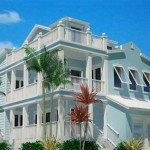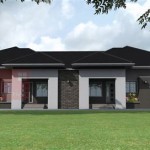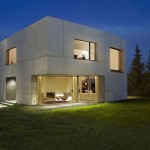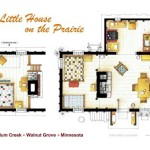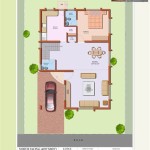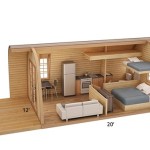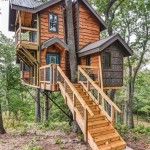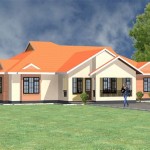House Plans: American Bungalow
The American Bungalow style house plan remains a popular choice for homeowners seeking a blend of comfort, practicality, and architectural charm. Characterized by its low-slung profile, horizontal emphasis, and handcrafted details, the bungalow offers a welcoming and efficient living space suitable for a variety of lifestyles. Understanding the core elements of this architectural style is crucial for anyone considering building or renovating a bungalow.
The bungalow style originated in India and gained popularity in the United States during the late 19th and early 20th centuries. Its rise coincided with the Arts and Crafts movement, which emphasized simplicity, functionality, and the use of natural materials. The bungalow's compact footprint and efficient use of space made it a popular choice for the growing middle class.
Several key features define the American Bungalow. Low-pitched roofs, often with gables or dormers, are a hallmark of the style. Deep overhanging eaves provide shade and protection from the elements. Wide front porches, often extending the length of the house, create outdoor living spaces and enhance the bungalow's welcoming appeal. Columns supporting the porch roof are typically thick and tapered, often made of wood or brick.
The emphasis on horizontal lines is another defining characteristic of the bungalow. This is achieved through the use of long, low windows, often grouped together in bands. The horizontal siding, usually wood or stucco, further reinforces this visual theme. Built-in cabinetry, shelves, and window seats are common interior features, reflecting the Arts and Crafts influence and maximizing space utilization.
Interior layouts typically prioritize functionality and flow. Common areas, such as the living room, dining room, and kitchen, are often open and connected, creating a sense of spaciousness despite the bungalow's relatively compact footprint. Fireplaces, often centrally located, serve as focal points and provide warmth and ambiance. Bedrooms are typically situated on the same level, promoting accessibility and ease of living.
Variations within the American Bungalow style exist, influenced by regional preferences and cultural trends. The California Bungalow, for example, often incorporates stucco exteriors, Spanish tile roofs, and courtyards, reflecting the influence of Spanish Colonial architecture. The Chicago Bungalow, prevalent in the Midwest, is characterized by brick construction, wider lots, and larger porches.
When considering bungalow house plans, careful attention should be paid to the specific needs and lifestyle of the occupants. The number of bedrooms and bathrooms, the size and layout of the kitchen, and the inclusion of features such as a home office or a finished basement should be considered. Lot size and orientation are also important factors, as they will influence the placement and design of the house.
Working with an architect or a reputable house plan provider can be beneficial when selecting or customizing bungalow plans. They can provide expert guidance on design options, material selections, and building codes. Modifications to existing plans can be made to accommodate specific needs and preferences, ensuring that the final design meets the homeowner's vision.
The enduring appeal of the American Bungalow stems from its timeless design, functional layout, and connection to the Arts and Crafts movement. Its emphasis on simplicity, craftsmanship, and comfortable living continues to resonate with homeowners seeking a home that is both stylish and practical. Whether choosing a pre-designed plan or opting for a custom design, the bungalow offers a versatile and appealing option for those seeking a home that reflects their values and lifestyle.
Modern interpretations of the bungalow style often incorporate updated features while retaining the essential characteristics of the original design. Energy-efficient windows and insulation, open floor plans, and updated kitchens and bathrooms can seamlessly integrate with the bungalow's classic aesthetic. This adaptability ensures that the bungalow remains a relevant and desirable housing option for years to come.
Choosing the right bungalow house plan involves careful consideration of various factors, including budget, lifestyle, and site conditions. Researching different variations of the bungalow style and consulting with professionals can help homeowners make informed decisions and create a home that truly reflects their individual needs and aesthetic preferences.
The beauty of the bungalow lies in its ability to adapt to different contexts and personal preferences. Its enduring charm and practical design make it a versatile choice for homeowners seeking a home that is both comfortable and aesthetically pleasing. By understanding the key features and variations of the American Bungalow, individuals can embark on their home-building journey with confidence and create a space that reflects their unique vision.

Plan 785010kph New American Bungalow House With 2 Story Family Room Floor Plans

Defining Features Of An American Classic The Bungalow House Plans Craftsman

Defining Features Of An American Classic The Bungalow Floor Plans Family House Budget

Bungalow House Plans We Love Blog Homeplans Com

American Bungalow Floor Plans Elegant Bungalows Gif 750 762 Bedroom House Craftsman Style

Bungalow House Plans We Love Blog Homeplans Com

Bungalow Small Craftsman Style House American Homes Beautiful 1921

American Bungalow Plan Ca 1900 Figure 2 British Terraced House Scientific Diagram

1921 Modern Bungalow Type House C L Bowes American Homes Beautiful

Bungalow House Plans Floor Designs Thd

